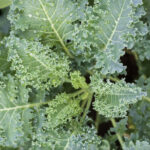 There are still surprises out there.
There are still surprises out there.
One evening, I was scurrying around the kitchen preparing dinner when the doorbell rang. At the door was someone I had met only once before, at the home of a mutual friend. It was Dave Kegris, known to many Harrisburgers as owner of the Jackson House restaurant on N. 6th Street. I haven’t been to Jackson House, but my older son tells me Dave makes the best burgers in town.
He presented me with a book he purchased in New York City. He said it was the story of an Italian grocery store in New York and that, when he saw it, he knew that he had to buy it. I excitedly thanked him and said I would return the book when after reading it. “No,” he said, “it’s for you.” And then, he flew out the door.
And what a book it is. It’s the story of an Italian family, the Santomauro’s, who were among the waves of Italian immigrants who came to New York in the early 1900s in search of a better life. For 104 years, this family has operated Di Palo’s, an Italian grocery store on the Lower East Side.
Back then, Italians from every region packed into what would become known as “Little Italy.” Although Little Italy has all but disappeared, Di Palo’s is still there, owned and operated by Lou, his brother Sal and his sister Marie. They carry on the tradition of their great-grandparents, grandparents and parents in not just importing and selling Italian food, but honoring its origins and sharing their love and knowledge of Italy with others.
A soon as I started reading this book: “Di Palo’s Guide to the Essential Foods of Italy,”I knew I wanted to share it with readers of TheBurg. But how to do that? The book is a primer for the most prized Italian foods: mozzarella, pecorino cheese, ricotta cheese, sea salt, grana Padano and Parmigiano-Reggiano cheeses, coffee, olive oil, balsamic vinegar, prosciutto, pasta, the “mountain cheeses” and speck. These are the building blocks of Italian cuisine and, while I always thought I knew a lot about them, I found out I have a lot to learn.
The book is about a journey—the story of a family who gave their hearts to a store where customers still come to learn about food and life.
Lou Di Palo travels to Italy several times a year, both to see where his imported food comes from and to spend time with the artisans who produce it. He has visited all 20 regions of Italy and every province within them. He now knows how each and every product is made and how it was made hundreds of years ago. He has walked the hills of Umbria and Tuscany, Lazio’s grasslands and the salt fields of Sicily. You can sense the love in his heart when he describes the farmers, olive growers and pasta makers he has met along the way who have become his friends.
I described the book as a “primer,” but it is really a three-credit college course! Each chapter contains everything you ever could know about buying, storing and serving each of the “essential” Italian foods. Here are some tidbits from the book.
Ricotta Cheese:
The taste of ricotta varies with the type of sheep’s milk used to produce it. It is best in the spring when the grass eaten by the sheep is new and sweet. If you see imported sheep’s ricotta in the summer, it will likely not be very good. Good, fresh ricotta is best served by itself on a plate or with a piece of bread topped with a little olive oil or honey.
Mozzarella:
Good, fresh mozzarella should be eaten the same day it is made (we’ll have to visit Di Palo’s for that!). Different shapes of mozzarella serve different purposes. The drier, braided shape is nice shredded into salads, while creamy burrata is excellent when topped with fresh tomatoes or preserved peppers. The little balls of bocconcini are perfect as appetizers wrapped in prosciutto, marinated in oil and herbs or doused with good vinegar.
Prosciutto:
Prosciutto di Parma is the best and is expensive. It can be aged as long as 20 months. According to Lou, never buy it pre-packaged. A good Italian butcher will always give you a thin slice to taste before you buy. Prosciutto will taste differently depending from where in the leg of ham the slice is cut. Try it in a panini made with focaccia (soft, cake-like bread), mozzarella and maybe some mortadela, a salami made with little cubes of fat and pistachios. Toss bits of prosciutto into scrambled eggs for breakfast or into a salad for dinner.
There is no recipe in my column this month, rather some thoughts to share. Italian cooking with quality ingredients is, for me, about a link to my heritage. I remember my parents searching high and low for the best cheeses, olive oils, dried beans and canned plum tomatoes in their adopted country. Good Italian foods are works of art and make a big difference in the dish you end up with.
And this column is a big “thank you” to Dave Kegris. TheBurg and a love of Italian food brought him to my door with a book I will treasure. Di Palo’s is now on my list to visit someday. And I think I could talk with Lou Di Palo all day long. Grazie, Dave.
To learn more, pick up a copy of “Di Palo’s Guide to the Essential Foods of Italy: 100 years of Wisdom and Stories from Behind the Counter” by Lou Di Palo (Ballantine Books, New York).





